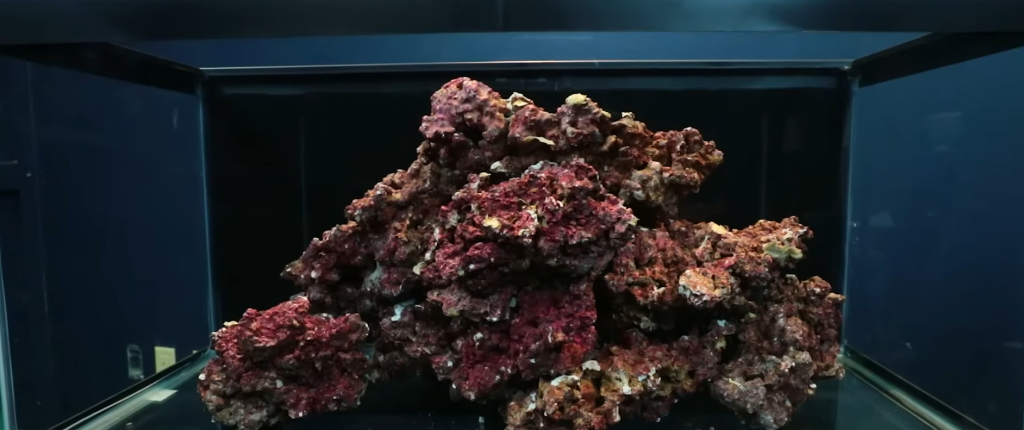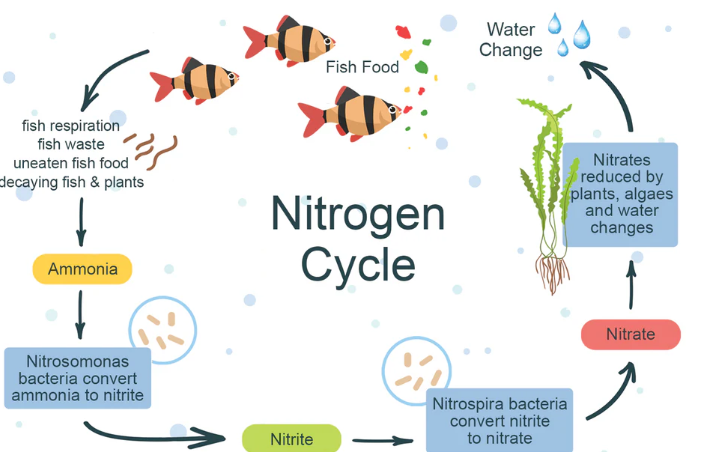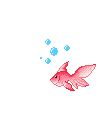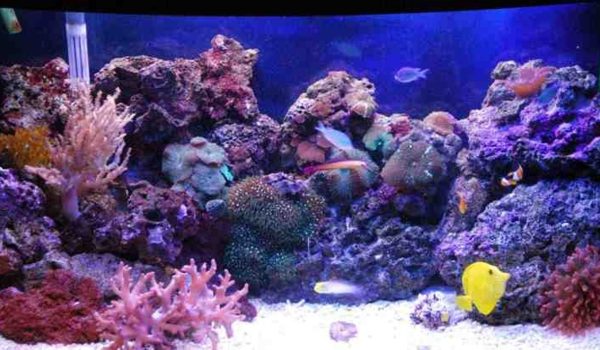When setting up a saltwater reef aquarium, there are a few things you need to consider. You should know what kind of fish you want to keep, how large you want your aquarium to be, and your budget for the entire project. The type of fish you can keep often depends on the size of your aquarium. I think one of the best starter aquarium sizes is either a 40-gallon or a 55-gallon tank; with this size, you can easily keep a good number of beginner fish. Regardless of the tank size you plan on buying, you’ll need to purchase a stand to support the weight of the aquarium. Fun fact: every gallon of water weighs 8.34 pounds (or 3.78 kilograms), so you’ll need a sturdy stand to support that weight. Since this will be your first saltwater reef tank, you’re likely to make a mistake or two; a larger water volume gives you more room for error. I would not recommend starting with a tank smaller than 20 gallons as a beginner, as smaller tanks require more precision with water parameters.
Reef Tank Requirements
After you have decided what kind of fish you want to keep, you should research their specific requirements. What size tank do they need? What food do they eat? Are they aggressive, and can they be kept with other fish? Once you have determined which fish you want and how to care for them properly, you should select your tank. One thing to keep in mind is your budget. Creating a saltwater reef tank can be expensive, but it doesn’t have to be. Below is a list of the items you’ll need to set up a saltwater reef tank:
- A tank and stand to support it
- Proper filtration
- Lighting
- Aquarium Heater
- Saltwater mix
- Aquarium chemicals
- Water test kit
- Rocks/Hardscape
- Substrate
- Corals (Most likely)
- The Fish and food
- Extra maintenance equipment
Once you have figured out what kind of fish you want to keep, what tank size you will be using, and your budget for the entire project, the next step is purchasing the aquarium.
Your aquarium has just arrived, and you can’t wait to set it up! But before you add water, there are a few things you should do. First, take a damp cloth and wipe down the aquarium to remove any excess dust inside the tank. After you’ve cleaned it, you can move it to your aquarium stand. Remember, water weighs a lot, so you will most likely not be able to move the tank once it’s filled. Once the tank is on the stand, make sure it is sitting evenly; you don’t want your tank to be uneven, as this could cause damage to both the tank and the stand later on. Your tank is now clean, level with the floor, and in your desired location. The next step is to add your aquarium substrate and rock/hardscape.
Substrate
For substrate, I would highly recommend live aquarium sand. Live sand is extremely beneficial for a new saltwater aquarium, as it contains bacteria that help cycle and keep the aquarium clean. Personally, I would use CaribSea Special Grade Live Reef Sand. A good rule of thumb is to use 1 pound of sand for every gallon of water. Of course, there are exceptions to this, but as a general guideline, aim for 1 pound for every gallon.
Aquascape/Hardscape
Now that you have your aquarium sand, the next thing you need is the rock/hardscape. There are a few different types of reef rock you can use for your reef tank, the most popular being real live reef rock. There is also dry reef rock and wet reef rock that you can usually find at your local fish store. For your first saltwater aquarium, your best option is likely real live reef rock. Real live reef rock is similar to live sand in that it contains beneficial bacteria to help cycle and keep the aquarium clean. After you have selected your rock, the next step is to place it in the aquarium in a position you like. Here are a few examples.




Adding Water to the Aquarium
Since you have your sand and rocks arranged as you like them, the next step is to add water to the aquarium. You cannot simply add tap water; the proper way to fill a saltwater aquarium is to use pure RODI (reverse osmosis deionized) water. Then, you should add aquarium sea salt mix before filling your aquarium. If you want more information on how to complete this process, I recommend watching this video by the BRSTV team, as they explain it very well. BRSTV creating saltwater Now that you have added the sea salt mixture to your RODI water, you are ready to add the water to your aquarium. To avoid disturbing the sand and making the tank cloudy, I recommend using something like a plastic bag or a plate to catch the water as you pour it in. This will help prevent disruption of the sand bed.
You’ve added water to your aquarium, and now you need to set up all of your equipment. You’re going to need a proper filtration system, an aquarium light, a water heater, and a thermometer to ensure the heater is working correctly. There are many additional items you could add to the aquarium that would be beneficial, but the list above includes what is absolutely necessary. Once you have installed your filter, heater, and light, you should add some live nitrifying bacteria to help start the nitrogen cycle.

Nitrogen Cycle
Now that the tank has been fully set up, you must cycle the aquarium to make it safe for fish. The purpose of cycling is to build up bacterial cultures that act as a natural biological filter: one culture converts ammonia to nitrites, and the other converts nitrites to nitrates. This process is necessary because ammonia and nitrite are toxic to fish. It is also why you should regularly perform partial water changes throughout the life of the aquarium to keep their levels low.
While cycling the aquarium, you’ll want to regularly test the water. The ammonia and nitrite levels should spike during this time. The cycle will be complete once these levels reach 0 ppm and the tank can fully process them quickly. Afterward, conduct a 50% water change to reduce any buildup of nitrates in the aquarium. The cycling process should take around 6 to 8 weeks. If you’d like to speed up the process, you can try raising the temperature and oxygen levels or adding filter media from an already established aquarium.
Acclimating Your Fish
Your tank is now cycled! You are finally ready to introduce fish into the aquarium. But the question is: what fish are you going to choose? What fish did you plan to keep in this aquarium? After you have done your research and fully decided which fish you want to keep and whether they will thrive in your current setup, the next step is to add them to the tank. However, don’t add too many at once, or you risk starting the nitrogen cycle again. It is best to introduce them slowly over time. Since fish are sensitive to changes in water conditions, you need to gradually acclimate them to the water in your aquarium before adding them. If you would like more information on how to acclimate fish, you should check out this video by Tidal Gardens.
After you have properly acclimated your fish and added it to the aquarium, you will need to observe your fish over the next 24 hours to ensure they are healthy. Look for any signs of illness or poor health, and make sure they are eating at feeding times. The best practice is to use a quarantine tank for fish before adding them to the main aquarium, as this helps reduce the risk of inadvertently introducing a disease. Although setting up a quarantine tank is not strictly necessary for your first reef aquarium, I do not recommend having one until your original reef tank has been up and running and fully established for a while.
Feeding Your Fish
When deciding what saltwater fish you want for your aquarium it is critical to understand if they are herbivores, carnivores, or omnivores. This will determine their dietary needs and requirements, and you’ll have to provide food accordingly. Just as setting up an aquarium is meant to replicate their natural living environment in the ocean, their diet should be as natural as possible or at the very least provide the same nutritional value. Depending on what type of fish you get, some will feed on organisms found in their natural habitat such as krill or plankton. Of course, there are also specialized fish food in flake or pellet form that contain the perfect blend of vitamins and nutrients your saltwater fish need.
Always be aware and careful of how much food you provide as well, because a common problem with fish health is overeating. Instructions for feeding can often be found on the package of the fish food, or alternately, seek advice from any fish expert from our store.
Regular Aquarium Maintenance

You will need to perform water changes regularly in order to keep the health of your aquarium in top condition. Perform water changes about once every two weeks by removing 1/10-3/10 of the aquarium water. Make sure when you do it you are also siphoning particulates, uneaten fish food, and other unwanted impurities from the water.
Conclusion
A lot of thought and research should go into starting a new aquarium; especially saltwater aquariums because they have a smaller margin for error. The most important aspect is research and planning. If you plan poorly or decide to do things impulsively, you will run into problems later on and can even hurt or kill your fish. Think about which fish you want to keep and then consider such items as aquarium size, equipment, decorations, substrate, food, filtration, and lighting. It is highly recommended that beginners should pick hardy fish when they start out because they have a greater tolerance to mistakes and errors.
Once everything is planned, the setup process is actually relatively simple. Cycling can take a while, but once you are able to start adding fish you’ll realize it was worth the wait and planning.
I hope you enjoyed this guide! if you want to learn more about the wonderful world of saltwater aquariums or have any question about fishkeeping let me know in the comments below.

